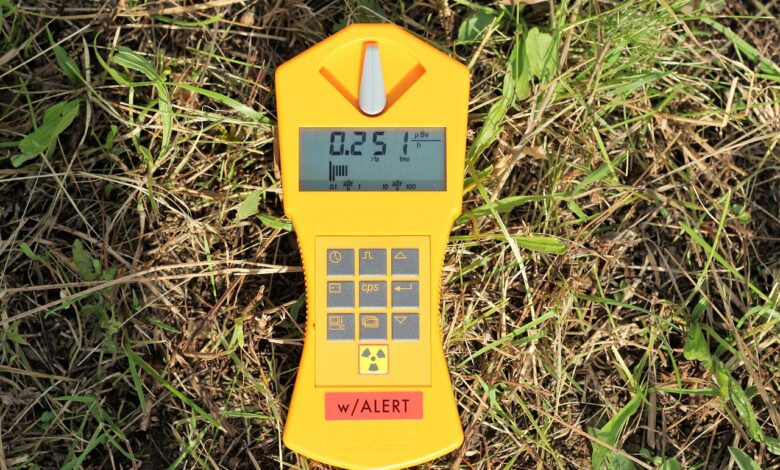What is Radiation?: Definition, Radiation, Sources, Protection

Radiation, a fundamental concept in physics, refers to the emission of energy in the form of waves or particles. This phenomenon encompasses a wide spectrum of electromagnetic waves, ranging from radio waves to gamma rays, and plays a crucial role in various natural and artificial processes. Understanding the nature of radiation is essential not only for scientists and researchers but also for the general public, as it influences our daily lives in ways we may not always recognize.
Radiation Definition
Radiation, in the realm of physics, refers to the emission or transmission of energy in the form of waves or particles through space or a medium. This energy can manifest in various forms, such as electromagnetic waves like light or radio waves, as well as particle radiation like alpha, beta, and gamma rays.
Radiation can be categorized into two main types: ionizing and non-ionizing. Ionizing radiation possesses enough energy to remove tightly bound electrons from atoms, leading to the creation of charged particles or ions. Examples of ionizing radiation include X-rays and gamma rays. On the other hand, non-ionizing radiation lacks the energy to ionize atoms and includes forms like radio waves, microwaves, and visible light.
Understanding the properties and effects of radiation is crucial in diverse fields, including medicine, where it is used for diagnostic imaging and cancer treatment, as well as in industries such as nuclear energy and telecommunications. While radiation plays a significant role in various applications, it also poses potential risks, necessitating careful regulation and safety measures to mitigate its adverse effects on living organisms.
Types Of Radiation
Radiation refers to the emission of energy in the form of waves or particles. In various fields, such as physics, medicine, and telecommunications, different types of radiation play crucial roles. Understanding the distinctions between these forms is essential for both professionals and the general public.
| Type of Radiation | Description |
|---|---|
| Electromagnetic Radiation | This type includes visible light, radio waves, microwaves, and X-rays. It propagates through space in the form of waves and does not require a medium. The energy carried by electromagnetic radiation depends on the frequency of the waves. Examples: Gamma rays, X-rays, ultraviolet light, visible light, infrared radiation, microwaves, and radio waves. |
| Ionizing Radiation | Ionizing radiation possesses enough energy to remove tightly bound electrons from atoms, leading to the formation of ions. This high-energy radiation can cause damage to living tissues and is commonly used in medical applications, such as X-rays and certain cancer treatments. Examples: Gamma rays, X-rays, and some ultraviolet radiation. |
| Non-Ionizing Radiation | Non-ionizing radiation has lower energy levels and does not have enough power to remove electrons from atoms. While generally considered less harmful than ionizing radiation, prolonged exposure to some non-ionizing radiation types can still pose health risks. Examples: Radio waves, microwaves, infrared radiation, and visible light. |
| Alpha Radiation | Alpha particles consist of two protons and two neutrons, essentially a helium nucleus. They have low penetration abilities and can be stopped by a sheet of paper or human skin. Although less penetrating, alpha radiation can be harmful if emitted inside the body. Examples: Radon decay, uranium decay. |
| Beta Radiation | Beta particles are high-energy, high-speed electrons or positrons emitted during certain types of radioactive decay. They have greater penetration abilities than alpha particles and can penetrate the skin. Examples: Beta decay in tritium, strontium-90. |
| Gamma Radiation | Gamma rays are electromagnetic waves with extremely high frequencies and energies. They are highly penetrating and require dense materials like lead or several centimeters of concrete to attenuate. Gamma radiation is commonly associated with nuclear reactions and decay. Examples: Nuclear reactions, certain radioactive decays. |
Effects Of Radiation
Radiation, a ubiquitous force in our environment, refers to the emission of energy as electromagnetic waves or as moving subatomic particles. While radiation plays a crucial role in various fields, including medicine and energy production, it also poses potential risks to human health and the environment.
Types of Radiation: There are two main types of radiation: ionizing and non-ionizing. Ionizing radiation, such as X-rays and gamma rays, has enough energy to remove tightly bound electrons from atoms, leading to ionization. Non-ionizing radiation, including radio waves and microwaves, lacks the energy to ionize atoms but can still affect biological tissues.
Health Effects:
- Acute Radiation Syndrome (ARS): Exposure to high doses of ionizing radiation within a short period can cause ARS, characterized by symptoms like nausea, vomiting, and fatigue. Severity depends on the radiation dose.
- Cancer Risk: Prolonged exposure to ionizing radiation increases the risk of cancer development. This risk is influenced by factors such as the type of radiation, duration of exposure, and individual susceptibility.
- Genetic Effects: Ionizing radiation may induce genetic mutations, potentially impacting future generations. These effects are a concern in assessing the long-term consequences of radiation exposure.
- Chronic Health Conditions: Low-level, chronic exposure to radiation has been linked to various health conditions, including cardiovascular diseases and other non-cancerous disorders.
Environmental Impact:
- Ecosystem Disruption: Radiation can disrupt ecosystems by affecting flora and fauna. The extent of impact depends on the type and amount of radiation released.
- Soil and Water Contamination: Radioactive substances released into the environment can contaminate soil and water, posing risks to both terrestrial and aquatic ecosystems.
- Long-Term Consequences: The long-term consequences of radiation exposure on the environment are a subject of ongoing research. Monitoring and mitigation efforts are essential to address potential ecological imbalances.
Radiation Sources
Radiation is a ubiquitous phenomenon, originating from various natural and artificial sources. Understanding the different types and origins of radiation is crucial for assessing its impact on human health and the environment.
| Source Type | Description |
|---|---|
| Natural Sources | |
| – Cosmic Radiation | Originates from the sun and outer space. |
| – Terrestrial Radiation | Emanates from naturally occurring radioactive elements in soil and rocks. |
| – Radon Gas | Released from the ground and can accumulate in buildings. |
| – Internal Radiation | Naturally occurring radioactive elements within the human body. |
| Artificial Sources | |
| – Medical Procedures | X-rays, CT scans, and nuclear medicine contribute to artificial radiation exposure. |
| – Nuclear Power Plants | Generate electricity through controlled nuclear reactions. |
| – Industrial Sources | Certain manufacturing processes and materials emit radiation. |
| – Consumer Products | Smoke detectors, certain building materials, and electronic devices may contain radioactive elements. |
| – Nuclear Accidents | Unplanned releases of radioactive materials due to accidents or disasters. |
It’s essential to manage and regulate exposure to radiation, considering both natural and artificial sources, to ensure public safety and minimize potential health risks. Public awareness, stringent safety measures, and ongoing research are integral components of effective radiation management strategies.
Radiation Protection
Radiation protection is a critical field dedicated to safeguarding individuals and the environment from the harmful effects of ionizing radiation. Ionizing radiation, which includes X-rays, gamma rays, and certain particles, possesses enough energy to remove tightly bound electrons from atoms, leading to potential health risks.
- ALARA Principle: “As Low As Reasonably Achievable” is a fundamental principle in radiation protection, emphasizing the minimization of radiation exposure to levels that are practical and achievable without compromising the benefits of the associated activities.
- Time, Distance, and Shielding: Controlling the duration of exposure, increasing the distance from the radiation source, and utilizing appropriate shielding materials are key strategies to reduce radiation exposure. These measures aim to limit the dose received by individuals and prevent unnecessary exposure.
- Personal Protective Equipment (PPE): In various professions involving radiation exposure, such as medical imaging or nuclear industry work, the use of specialized PPE like lead aprons, lead gloves, and thyroid shields helps mitigate the impact of ionizing radiation on the human body.
Regulatory Framework: Governments and international organizations have established stringent regulations and guidelines to ensure the safe use of radiation. These regulations cover areas such as permissible dose limits, occupational exposure, and environmental protection. Adherence to these standards is crucial to maintaining public health and safety.
Radiation Monitoring: Continuous monitoring of radiation levels in occupational settings and the environment is essential for early detection of any abnormalities. This monitoring allows for prompt intervention and corrective measures to prevent overexposure and mitigate potential health risks.
Emerging Technologies: Advancements in technology contribute to the development of innovative approaches to radiation protection. This includes the use of robotics in high-risk environments, improved imaging techniques with lower radiation doses, and enhanced materials for more effective shielding.




I dont know Gamma Radiation. Thank you so much for information.